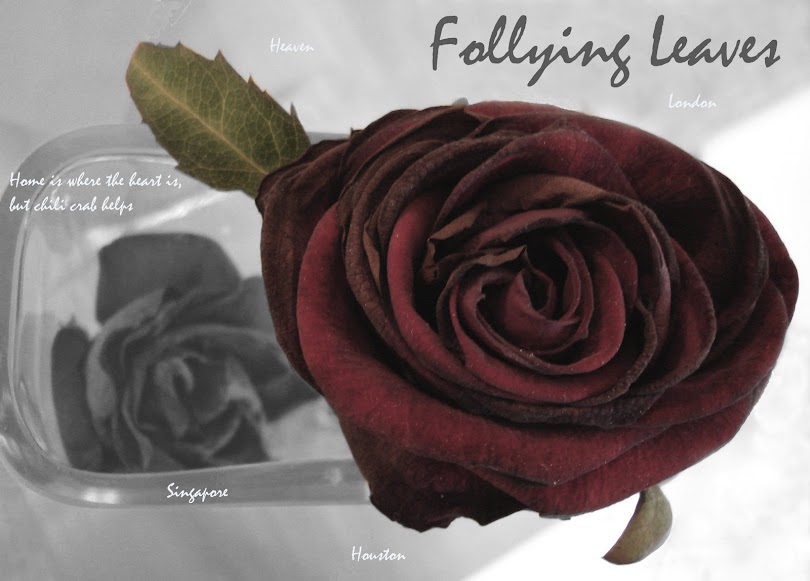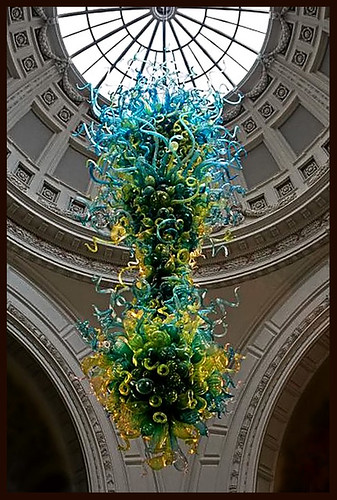My family had our second reunion dinner tonight. My brother's girlfriend, Q, joined us. The girls had our de rigeur political arguments with dad after dinner, but first, food. What a feast! All those delectable dishes my mum and helper had whipped up in the kitchen. Mind you, this was straight after the mini-feast at Muthu's (see below)!
Some highlights from the kitchen:
1. Yu Sheng
First up, yu sheng (raw fish salad). This is an auspicious dish, first invented in Singapore. The word "yu" in Chinese means "fish", but it can also denote prosperity. No new year feast is complete without it. In those wilderness five years when I was stuck in London over new year, this was the one thing I craved most.
Besides being full of colour and textures and flavours, yu sheng is loaded with symbolic meanings. Each ingredient represents a good wishing for the new year (I have denoted some sayings below).
 to start with, strips of carrot, chinese turnip, cucumber etc., as well as more exotic condiments like assorted preserved gingers, pomelo seeds etc. are arranged poetically on a ornate plate.
to start with, strips of carrot, chinese turnip, cucumber etc., as well as more exotic condiments like assorted preserved gingers, pomelo seeds etc. are arranged poetically on a ornate plate. most people use raw salmon nowadays, but we like the more traditional saito
most people use raw salmon nowadays, but we like the more traditional saito万事吉利 - lime is squeeqed over the raw fish to "cure" it
年年有余 - the raw fish is then added to the salad
红运当头 - cinnamon powder and pepper are sprinkled
甜甜眯眯 - the salad dressing, a sweet plum sauce, is poured over with some oil
金想事成 - small golden crackers (my favourite bit) are scattered over the salad

2. Roasted Suckling Pig
after pic -->
This is the golden roasted pig, which is gigantic. We actually bought the smaller roasted suckling pig. The pigs are first marinated, then mandatorily kept in the freezer for two days to dry out. They are then roasted in an industrial oven, before being glazed and decorated. In the factory, modern technology has taken over traditional techniques. In fact, pigs are no longer roasted over charcoal anywhere, except in very few restaurants. Instead, they are cooked in an electric oven. Personally, I think charcoal gives a smoother, more refined finish to the skin; it's not as tough, for one, more crackly. But this was delicious nonetheless, dipped in a cloying sweet black sauce.
3. Rabbit fish

This is a deceptively plain-looking fish, because it is just so expensive during the Chinese New Year season. The mating cycle of the rabbit fish follows the lunar calender, so come January/February, it's belly is always filled with delicious roe - yellow and slithery and succulent. Hence, its rarity. It is always bought cooked from the market. The hawkers will parboil the fish in a pan as large as my dining table, and after many turns, the water is chalked full of sweet goodness, flavouring subsequent pans of fish.
4. Ho See Fatt Choy
 Ho see refers to oysters - not the freshly shucked types, but dried Chinese oysters. Fatt Choy refers to the black wisps of moss that grow at the edges of the deserts, preventing their sandy borders from expanding, and which of course the Chinese eat as well. This dish is cooked in a delicious red beancurd sauce with Chinese mushrooms and dried scallops, my favourite.
Ho see refers to oysters - not the freshly shucked types, but dried Chinese oysters. Fatt Choy refers to the black wisps of moss that grow at the edges of the deserts, preventing their sandy borders from expanding, and which of course the Chinese eat as well. This dish is cooked in a delicious red beancurd sauce with Chinese mushrooms and dried scallops, my favourite.
"Ho see" sounds like "all things" in Cantonese, and "Fatt Choy" means to grow in prosperity. So taken phonetically, this dish is a wishing that one will prosper in all things.




1 comment:
glad u're catching up on all the food that u missed!! :)
p/s: do give me a call before u go back to london. and lets try meet up if u have the time. :)
Post a Comment